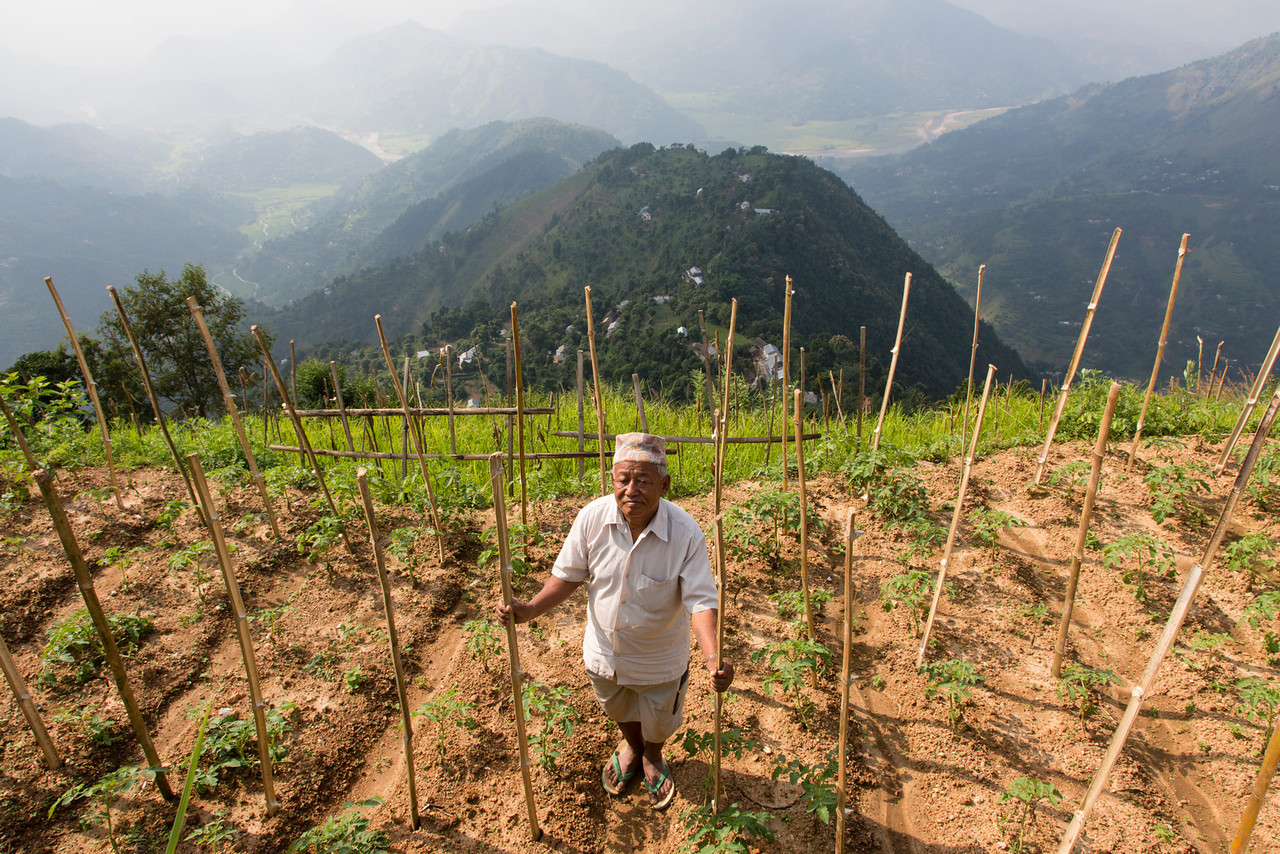Our guest author, Lewis Temple, Chief Executive for International Development Enterprises UK, highlights some of his organisation’s latest work in Nepal that has stimulated business in the remote, mountainous regions of the Himalayas.
Growing food in high-altitude areas of Nepal can be extremely difficult. Geographically remote, isolated from markets and subject to changing climatic patterns – these areas provide a tough reality for local rural people. Can you imagine trying to access goods and services when you live 4,000m above sea level in the middle of the Himalayas with no road network?
Since 1992 iDE has used a business or market-driven approach to change the lives of one and a quarter million of these poor rural people in Nepal.
It started by designing and marketing innovative, yet affordable technologies like drip irrigation kits, to encourage fruit and vegetable production in the dry season so that farmers could increase their income and earn their way out of poverty.
Farmers on average earn an extra £140 per year from accessing these technologies. Kamal (pictured) has made £300 selling high-value tomatoes that he grew an incredible 4,000m above sea level.
This is no small feat – but working with individual farmers has its limits. If we are to reach many thousands more smallholders we need to engage the private sector to view farmers like Kamal as customers and offer a range of productivity-enhancing products and services closer to small farm communities.
But how can this be done in the mountainous and often isolated communities in Nepal?
iDE’s answer is to use something we call a ‘Commercial Pocket Approach’ built around Rural Collection Centres. This involves bringing together all the market actors in the local area so that they can all become profitable businesses. This includes the smallholder farmers, private sector input retailers that sell seeds, fertiliser and irrigation equipment, and the buyers of the produce.
These market actors meet regularly at the collection centres to coordinate efforts. For example:
- They plan together to ensure that the agricultural inputs like seeds and irrigation equipment are available at the right time. If a farmer wants to grow apples, carrots and tomatoes during the off-season they will pass on this information to an input retailer to organise the timely delivery of quality seeds, fertilisers and other farm inputs. The supplier gets an income and the farmer can grow large volumes of high quality produce – a win-win situation
- Then, they ensure the buyers know when to expect the produce. If a farmer informs a buyer to expect 100 heads of cabbage in three weeks’ time demand and supply can be established. The farmer can guarantee good sale and the buyer doesn’t waste time travelling to the collection centre.
- Finally, they ensure the farmers have a good idea of what kind of produce is available in the market and market prices. If a farmer has access to up-to-date, accurate market information they can capture the best price for their produce – for example by harvesting and selling tomatoes when the price is highest at the collection centre.
By establishing and scaling these smallholder commercial pockets we are catalysing the private sector and building demand for products and services that farmers need to grow their businesses.
Today over 150 rural collection centres serve 100,000 farming families – to celebrate iDE’s success we have put together an exciting graphic presentation for you. I hope you enjoy it:




